How do robotic lawn mowers work and do you need one?
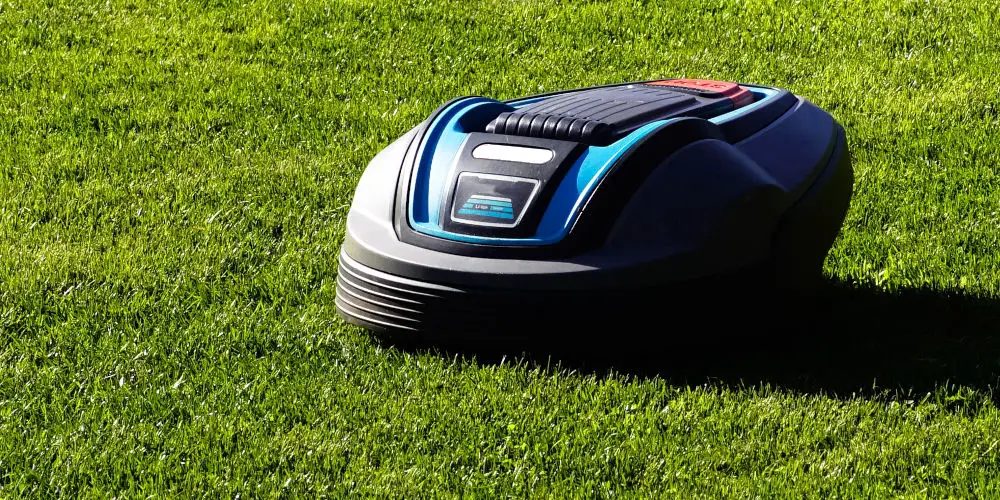
Having to mow your lawn is by far people’s least favourite gardening task. It’s hard, repetitive work. And usually, you miss a spot or two. However, there is an alternative. You could use a robomower. But how do robotic lawn mowers work, and are they life-changing?
The picture is far from clear cut (pun intended, sorry!) as a robotic mower will help you reduce the amount of cutting grass down to a bare minimum, but you’ll still need to be involved in the process.
That said, unlike hiring a gardener or bribing your kids with chocolates, once you’ve purchased your robot lawn mower the running and maintenance costs are low. Compared to a petrol mower, they are far more eco-friendly.
As we explore just exactly how do robotic lawn mowers work, we’ll cover all you need to know to make an informed buying choice. You’ll learn the typical set up process, how they mow, if they automatically recharge and you’ll learn about some popular brands and models currently available.
How do robotic lawn mowers work?
There are many fantastic features to explore when discussing how do robotic lawn mowers work. Here are some of the features that them different from your typical mower.
Smart navigation
Using a combination of sensors and a boundary wire to navigate your lawn, they quickly move around, cutting grass as they go. The boundary wire marks out the area where it should operate and connects to the dock, creating a closed loop. Sensors around the unit guide it as it moves.
Automatic charging
Part of the magic of robomowers is they automatically return to their docking station when either finished or have a low battery. As the unit docks, it starts recharging and then will restart mowing when the battery is full or next scheduled.
Mowing pattern
To the untrained eye, it can look like they are just whizzing around with no pattern. However, that’s not the case. Robot mowers use advanced programming to plot the best route for your lawn. They then select the best mowing pattern to ensure an excellent result.
Avoiding obstacles
The onboard sensors are dual-purpose. Firstly, they help the unit to navigate within the boundary wire. Secondly, they detect objects and obstacles before the unit has a chance to hit them. When detected, a robomower will pause, reverse and restart in a different direction.
Are they noisy?
Not at all. As a battery-powered unit, they have a small motor that doesn’t produce much noise. The average unit produces about 60 dB in sound, which is the same loudness as a normal conversation. A normal lawn mower produces around 90 dB of noise, so the robotic kind is far quieter.
What happens with clippings?
With each movement, the robot mower only cut a short piece of the blade of grass. These fine cuttings fall to the ground as mulch, serving as a natural fertilizer and deliver moisture back into the soil. There’s no need to dispose of cuttings anymore or even empty a collection bin.
Are they more eco-friendly?
Compared to petrol mowers, robotic lawn mowers are far more eco-friendly as they are battery-powered and generates no direct emissions. Typically, they consume very little energy, making them fairly cheap to run.
Of course, the exact running and maintenance costs depend on the size of your lawn, if it slopes and how often you programme it to cut.
Can someone easily steal and use my robomower?
Unfortunately, robot lawn mowers are easy to steal as anyone can pick them up and walk off. However, all have some form of anti-theft protection. The most common feature is an onboard alarm that goes off if the mower is stopped or lifted without the required pin code.
Some robotic lawn mowers have built-in Wi-Fi allowing you to use it for GPS tracking and blocking it from working if stolen. You can catch the thief red-handed!
If you want to explore this topic in more depth, start with our article: Do robot lawn mowers get stolen? as this will put your mind at ease.
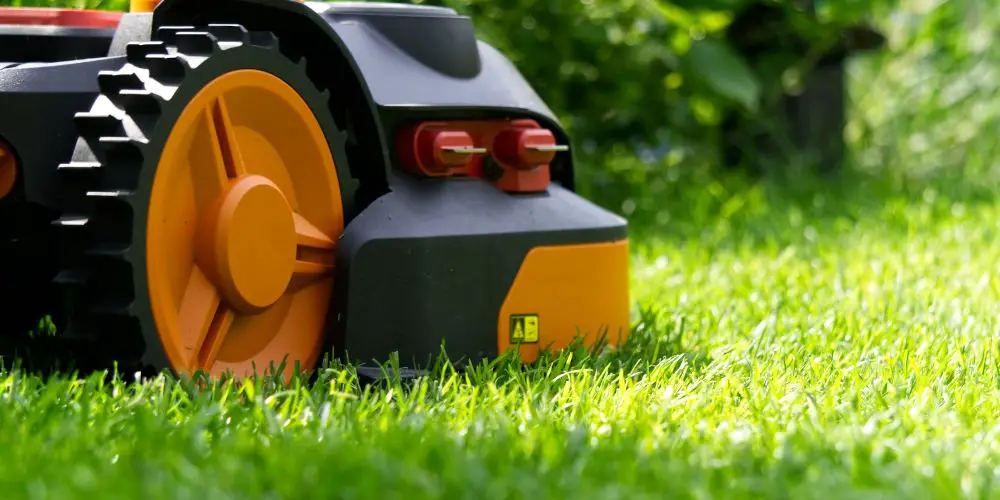
What to consider when you’re buying a robot lawn mower
Garden size
Every robotic lawn mower has a maximum area it can cover. Some can only handle 250 m2, others can comfortably navigate a lawn of 1,500 m2. So, it’s important to choose a unit that can easily handle the size of your lawn.
Slopes
Most gardens and lawns gentle roll with a slight slope, which causes no issues when using a robomower. If your lawn has a near-vertical incline, then you’ll struggle. The average robot lawn mower can handle an incline of around 30 degrees, making them ideal for most gardens.
If your garden is particularly hilly, then it’s worth checking that any potential robomowers can handle that degree of incline.
Multiple zones
Some units can handle multiple zones. For example, if you have a front lawn and back lawn or two lawn sections in your rear garden. Some models ask you to set a base zone, which is mowed automatically to the schedule.
If the unit can’t navigate between lawn areas, then you’ll need to carry the mower to the new area and manually start it. Some models will navigate between areas but only after being told to move and cut a different zone.
Do you need an all-weather robomower?
Models at the lower end of the price range will cut your lawn regardless of the weather. So, you might find yourself running out into the garden when it starts to pour down!
Other units have a built-in rain sensor, so will return to the dock when the raindrops start falling. After a while, they’ll check that the weather has improved and if safe, restart mowing.
Robotic lawn mowers are designed to live and work outside from late spring to early autumn. So, regardless of what model you buy, you will need to move the unit and dock inside during the winter. That said, you can leave the boundary wire in place.
Battery life and Charging to use ratio
With any battery-powered tool, most people only focus on how much time they get from each charge. And while this figure is important, you should also consider the ratio between the amount required to charge the battery and how long you can use the tool.
For example, you wouldn’t buy a drill that required 6 hours of charging but only gave 10 minutes of use per charge. Instead, you’d try and look for a unit that gave 30 minutes of use per 3-hour charge.
You should find that a battery lasts for four or five years under normal use.
Blades
Unsurprisingly every model use blades to cut the grass, and typically metal blades. Some units use a single blade that sits on a rotating plate, other use multiple small blades that sit on the outside of this plate. As this plate is adjustable, you can set the cutting height to your preference.
Do I need a mower garage?
It’s best to cover your robomower when not in use. You could buy a mower garage or build a DIY one. Having your unit protected from the elements will ensure it lasts longer and performs better.
That said, a mower garage isn’t the best place for your robomower during the winter. So, you’ll need to bring it inside as the seasons change.
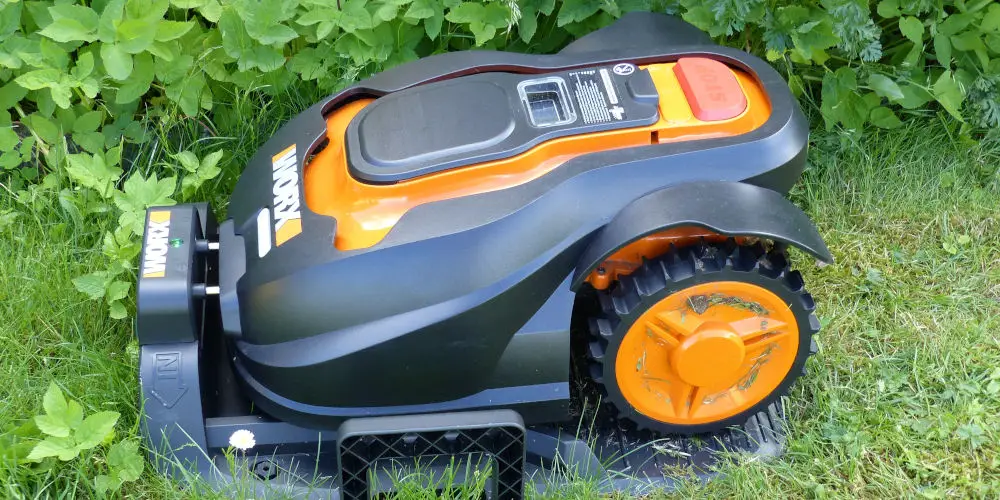
Setting up a robot lawn mower
Getting your new robomower set up involves a bit of hard work. You need to lay and secure a boundary wire and the dock. Next, you have to set up the unit and programme it. Finally, as it mows for the first time, you need to check its performance and adjust the settings.
Dock
Ideally, place the dock close to a power supply as your robomower will charge in-between mowing. Typically they need to have a metre or more clearance on three sides as this allow the unit to safely dock.
Boundary wire
The most arduous part of setting up a device is having to lay and secure the boundary wire. What makes it difficult, if you need to maintain a constant distance from the edge. Also, you need to ensure to leave a wide margin around obstacles (such as trees and the pond).
Each end of the boundary wire connects to the dock, creating a solid loop. It can take a few hours to complete this process. So you’ve been warned!
Programming
After completing the basic set up, you’ll need to do some basic programming including activating the anti-theft system, setting the cutting height, and a mowing schedule. Doing these should only take a few minutes.
Tracking errors
You can’t set and forget while hoping for the best. In reality, you will need to occasionally check that your robotic lawn mower has been active and is working at its best. By keeping an eye on your device, you’ll be able to spot any issues quickly and resolve them.
Which brands are making robomowers?
Many familiar brands have released robotic lawn mowers, with some offering a complete range of units across the price scale. Some new startups are also offering some exciting models.
Bosch
Offering an exciting range of models, Bosch has invented Logicut technology that makes cutting a lawn easier and more precise. They’ve also invested in building a superb anti-theft system. One of their most impressive models is the Bosch Indego S+ 350, which we’ve reviewed.
Flymo
Having dominated the UK’s lawn mower market for years, it’s no surprise that Flymo has released several models that cover a wide price range. The Flymo 1200R, for example, is an excellent model.
Robomow
Only offering robot mowers, Robomow has quickly built a good reputation with a superb product range. Their entry-level offering is the Robomow RX12u, which can cover a small lawn but offers a wide cutting width of 18 cm.
Honda
Well known for the garden tools, Honda has expanded into robomower. A prime example is the MIIMO HRM310, which is ideal for medium lawns. It charges quickly, offers 3 modes and has a built-in anti-theft alarm.
McCulloch
As another well-respected manufacture of garden tools, McCulloch offers a range of models including the ROB R600 offers an impressive charge to use ratio, large cutting width and is ideal for medium lawns.
WORX
Offering several options, WORX has developed a unique AIA technology that ensures your robomower tracks which areas it’s cut and where still needs to be done. A model of note is the WORX WR153E, which is excellent for large lawns and has a massive 22 cm cutting width!
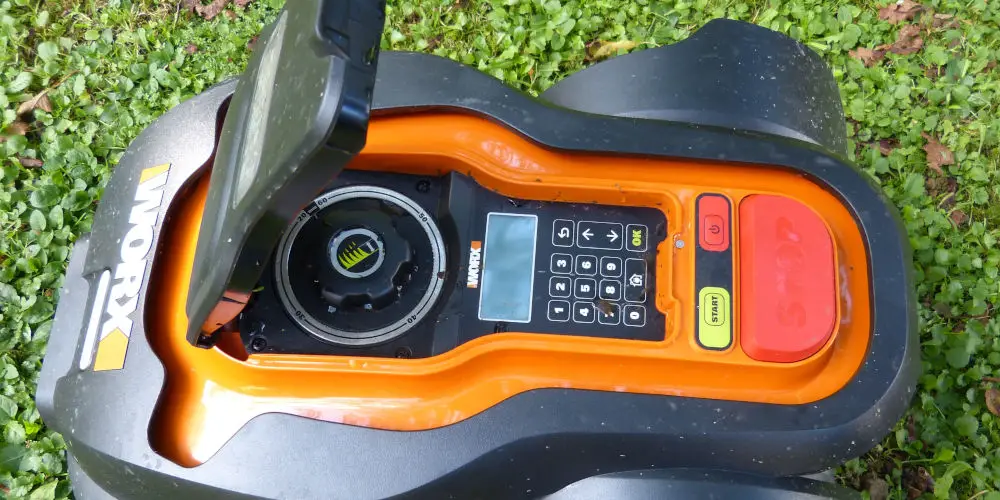
How much do you need to spend to buy a decent robotic mower?
Having researched the market, you need to spend at least £600 to buy a decent robotic mower. Of course, you can buy an entry-level model for around £300, but they come with many downsides. At the other end of the price scale, some units cost £2,000 and offer a long list of features.
If you’re buying your first robotic lawn mower, then invest in an entry-level unit and see it as an experiment. In a year or two, you’ll have a better understanding of how robotic lawn mowers work and what features you require. With this information, you’ll be able to upgrade with ease.
Will having a robot lawn mower mean I never have to mow again?
Sadly, you will still need to do some mowing. If your grass grows quickly over winter, then you might need to manually mow it down to a level that your robot lawn mower can handle.
If your lawn is surrounded by fences or overhanging bushes, then you will need to tidy the edges with a strimmer as your robomower won’t cut right up to them.
That said, for the majority of lawns, using a robot mower will reduce the amount of mowing you need to do by 95% or more.
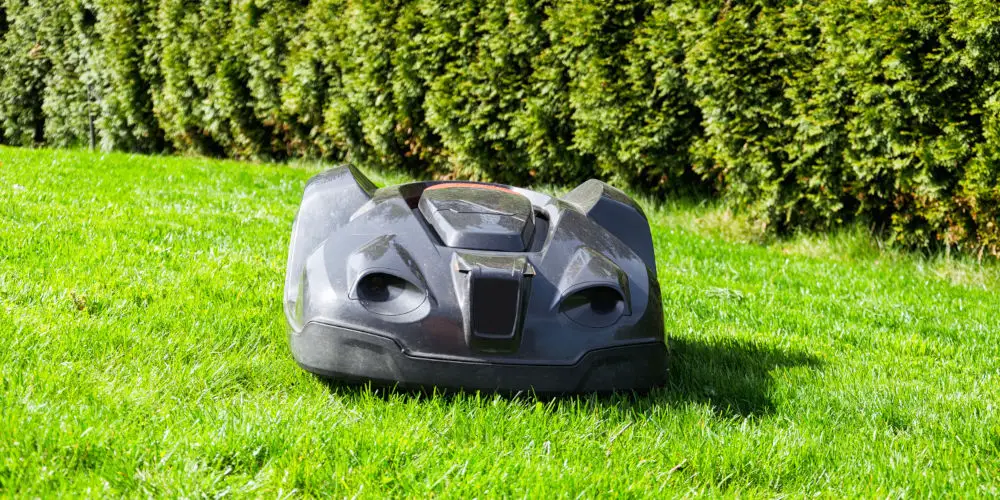
Your best starting point
As you now have a better idea of the inner workings of robotic lawn mowers, you should feel empowered to make an informed buying decision. You shouldn’t need to wonder how do robotic lawn mowers work anymore!
If you’re buying your first robot mower, start with a more affordable option, take your time to learn what you like and dislike about it. Using your knowledge, you can invest in a better model that more adequately meets your requirements.




